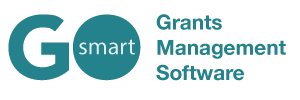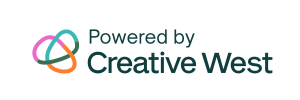In November, GO Smart teamed up with ZAPPlication, an art fair and festival application management and jurying system (powered by regional arts nonprofit WESTAF), to conduct a webinar on grantmaking best practices.
Before diving into these best practices, we should start with the essential players in any funding project and the roles they play.
 A typical grant cycle relies on three different kinds of people:
A typical grant cycle relies on three different kinds of people:
- Grantmakers
Grantmakers are typically private or government organizations, like the National Endowment for the Arts (NEA) or State Arts Agencies (SAA). Grantmakers who utilize the GO Smart platform are most often referred to as grant administrators or “admins” for short.
- Grant seekers
Grant seekers will usually be in the same networks as the grantmaker in order to learn about new granting opportunities, as many of these opportunities are region-specific. In many GO  Smart cases, grant seekers tend to be artists or local arts programmers who run an array of community programs, from after-school dance classes to cultural events.
Smart cases, grant seekers tend to be artists or local arts programmers who run an array of community programs, from after-school dance classes to cultural events.
- Panelists
Panelists tend to be experts in their specific fields who are invited by the grant administrator to review and approve potential grantee applications.
While different grant opportunities, even under the same organization, can have very different needs during the process, these three roles are integral no matter what your workflow looks like. Each opportunity can be easily customized through the GO Smart platform. A typical grant cycle is centered around a single application process that is not likely to change year to year. However, if your organization runs multiple opportunities, you can set up each grant with the specifications that will work best for your existing systems. These opportunities can be run concurrently or at different times.
Some organizations may choose to include an intent to apply or eligibility survey prior to receiving applications. This step is optional and can be omitted if not necessary for your organization’s workflow. However, in some cases, it can be beneficial to learn more about potential applicants before they take the time to complete a full application. When creating an application for your grant, it’s also important to ask the right questions, remain cognizant of your grant seeker’s abilities, and ask questions that will save both you and your applicants time throughout the process. These steps can also be valuable to you as a grantmaker—as well as your panelists, who are just as important as the grant seekers in the overall process.
After applicants have completed the application form and panelists have completed their reviews, admins will alert them with award letters and contracts and occasionally request follow-up documentation, often referred to as post-award documentation. Payments may be awarded to successful grant seekers immediately or paid out in installments throughout the granting season. Certain grants may call for interim reports, which will keep the admins abreast of accomplishments and potential obstacles that the grantees have encountered while the project is still in progress.
After the grantmaking season has concluded, applicants will provide a final report that details their progress. This could be a big-picture overview of their successes or a deep dive into specific metrics of their funded project or program. While this is a vital step in a grantmaker’s due diligence, admins will also use this data to get a detailed picture of how the grant funding was utilized project-to-project and evaluate their grantmaking activity’s overall impact. This, in turn, will help the admin and their organization improve on workflows and make their grants process more accessible, inclusive, and efficient going forward.


